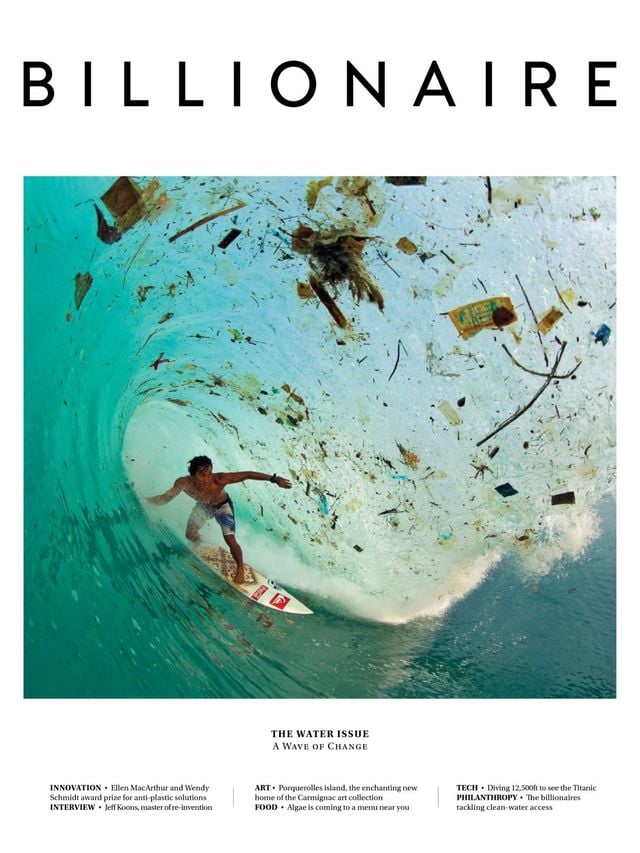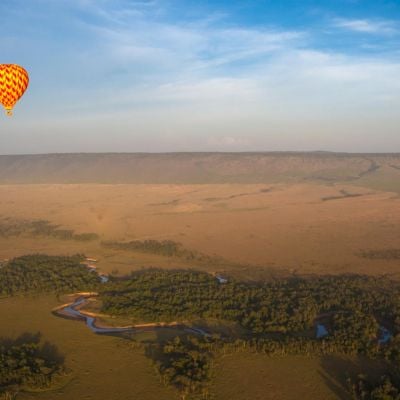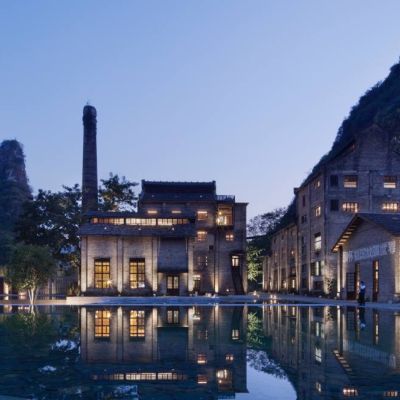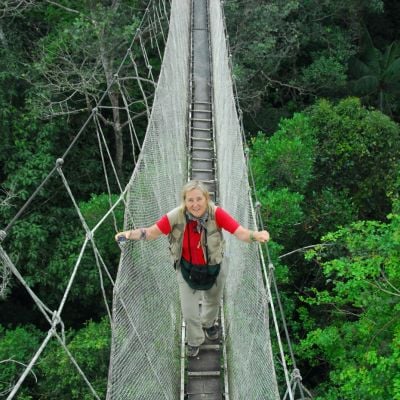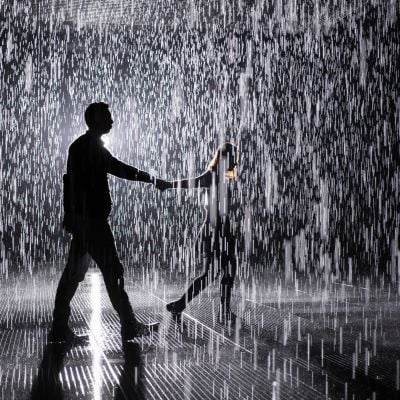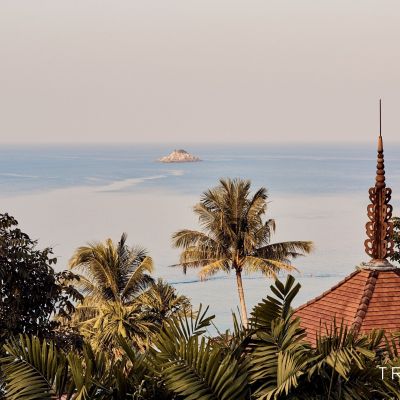A Guide To Luxury Sri Lanka

Sri Lanka is a country rich with biodiversity, contradictions, and an aura of unique loveliness.
 Taking the train from Hatton to Ella (c) Tara Loader Wilkinson
Taking the train from Hatton to Ella (c) Tara Loader Wilkinson
With a loud ‘peep’, our train pulls out of Hatton railway station, the de facto tea capital of Sri Lanka: a country as famous for Ceylon tea as it is for breath-taking natural beauty. We gaze out of the window like excited children as we start a sedate, four-hour chug.
This is no ordinary train ride. Tied to the front buffer are a bunch of luscious red flamingo flowers and two proudly waving Sri Lankan flags, emblazoned with a golden lion, four gold leaves and stripes of green and saffron. The flag represents the four religious groups of Sri Lanka: the Buddhist Sinhalese; Muslims; Tamils; and Christians.
It is to this diversity, perhaps, that Sri Lanka owes its unique loveliness. Called “the world’s most beautiful island” by legendary explorer Marco Polo — and who would disagree with him? — it is hard not to descend into superlatives when describing it. For here is a unique and not- yet overdeveloped country where the Portuguese, Dutch and British colonists have left their mark, for better or worse.
As the train clickety-clacks through a richly abundant landscape, the view evolves like a storyboard. Our journey begins in a thousand of acres of verdant, terraced tea plantations dotted with brightly dressed tea pickers (pickers are always female, our guide says, simply because “women are better at it”). We come through small villages with dusty roads fringed by banana plants; modest homes with rough corrugated roofs painted in audacious neon pinks and blues. Villagers have adopted some stretches of the track as walkways, always ready with a wave and a smile. As we climb high into the clouds our view opens into a valley of deep jungle, punctuated now and then by a plunging waterfall. A hawker comes down the carriage with a thermos flask of condensed milk tea: steaming hot, eye wateringly sweet and delicious. Pulling into one of the myriad stations along the route, you could be in an English country garden. The beds are neatly planted with daisies, hydrangeas and bright geraniums, carefully encircled with white picket fences. Having said that, Sri Lanka is one of 34 of the world's biodiversity hotspots, bursting with endemic flora and fauna due to its varied climate and topographical conditions.
But even Sri Lanka's cities are full of with contradictions, shown by racist clashes in Kandy while we were there, causing President Maithripala Sirisena to declare a state of emergency. It served as a timely reminder that only a decade ago this country was still rocked by civil war, and, in many ways, the old scars have not healed. Sri Lanka's diversity is at once its curse and its blessing.
A tour of its most contrasting spots is the only way to begin to understand this complicated and beautiful country. We started with Colombo, Hatton, Yala and Galle, courtesy of luxury travel operator, Lightfoot Travel.
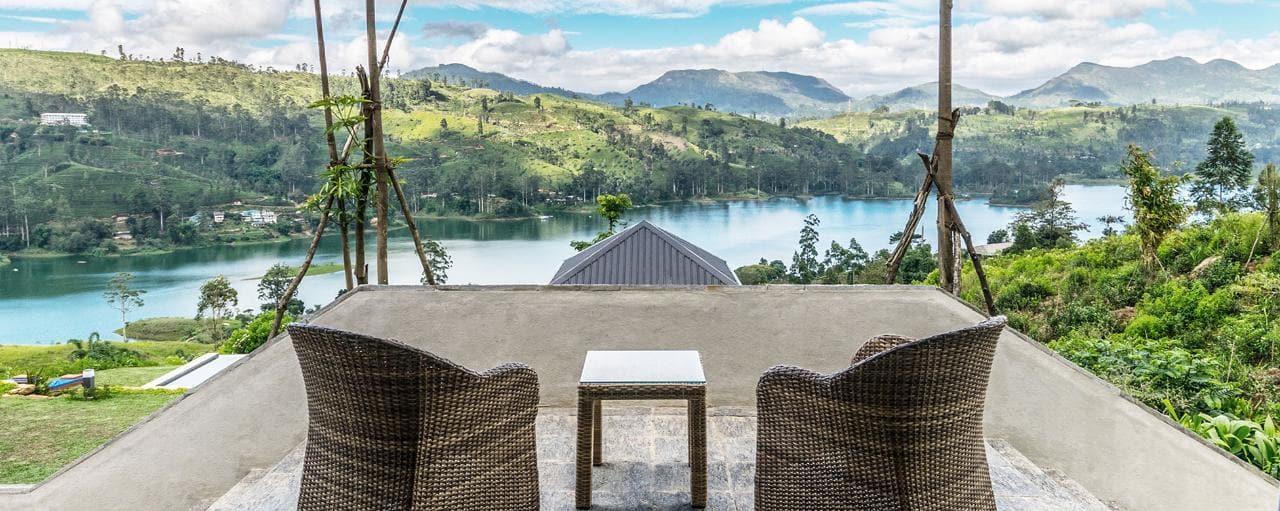 Camellia Hills, a five-bedroom tea planters bungalow that is part of Teardrop Hotels
Camellia Hills, a five-bedroom tea planters bungalow that is part of Teardrop HotelsHatton
If you only have time to visit one place in Sri Lanka, make it the tea country. After all, it was the humble cuppa that changed the country’s history. Our journey takes us four hours by car up into the Dunkeld Estate: the most picturesque of tea plantations. (You can get there quicker with Cinnamon Air’s amphibious plane, which flies from Colombo and lands on the lake.)
We stayed at Camellia Hills, a boutique hotel modelled on a traditional 18th century planters’ bungalow, with a few comfortable updates, such as an irresistibly Instagrammable 10m infinity pool; a charming library; and five beautifully appointed suites.
Overlooking Castlereagh Reservoir, the panorama from every corner is otherworldly. The vast, mirror-flat lake reflects the manicured green tea hills, punctuated every now and then with the white prick of a Stupa. The reservoir was flooded in the 1960s to generate hydropower: a major source of electricity in Sri Lanka.
Sit on the open-sided terrace and take tea — pekoe orange: the variety you see growing around you. It is served at your table with fragrant cardamom cookies and scones, cream and delicately scented jackfruit jam. Although the view is beautiful in the sunshine, the frequent torrential rain showers bring out a misty magic in the hills. The days are hot but at night the temperature plummets. So the log fire and woollen rugs are quite welcome at dinner, and head chef Shanti’s curries provide central heating for the soul.
Rain or shine, the biodiversity here is second to none. Take a hike through the tea fields and you’ll see red-vented bulbuls, spotted munia feeding off the grasses, and the black-and-white flash of a magpie robin. If you’re lucky, you will see the gorgeous brahminy kite wheeling overhead. The local tea factory, Norwood, is also worth a visit to understand the full extent of the tea-making process, from bud to bag. You will never look at a cup of tea in the same way.
www.lightfoottravel.com/property/camelliahills
 Wild Coast Tented Lodge in Yala, part of the Resplendent Ceylon collection
Wild Coast Tented Lodge in Yala, part of the Resplendent Ceylon collectionYala National Park
On the rugged fringes of Sri Lanka's southern coastline is Yala National Park, a protected area which boasts the highest leopard density in the world, along with sloth bears, elephants and more. While worth a visit, this must be navigated carefully to avoid queues. Try to visit Block 5 rather than Block 1 and go early in the morning. Make your base the Wild Coast Tented Lodge, a five-star eco-hotel with out-of-this world design by Dutch architects Nomadic Resorts and Bo Reudler. The 36 tented canvas ‘cocoons’ are spectacularly bizarre: white canvas zeppelins cantilevered 2m off the ground. Meticulous to detail, each is furnished with classic colonial campaign chairs; a cool box stuffed with stiff Colombo gin and tonics; a king-size four-poster; and a freestanding copper bath.
This is a genre-defying, Jules Verne-inspired steam punk’d, Indiana Jones-type ride aboard the Orient Express, with design so avant-garde it evades classification. Each cocoon has a small wooden terrace, a few feet from a watering hole (topped up in dry season using filtered ‘grey water’ on site) so you can have a private sundowner while observing the wildlife emerging at dusk. You will likely be joined by a wild boar or two, maybe even an elephant.
From your cocoon, take a stroll and you’ll see ancient faces in the gravity-defying Adrian Gray rock sculptures. The restaurant and bar are housed in large vaulted structures inspired by the craggy topology, clad in recycled teak scales with criss-cross bamboo scaffolding, sitting on ‘loopers’ (loopy pillars). The swimming pool flows through like a river and, as the sun sinks below the Indian Ocean, a single windswept tree is illuminated on the beach.
Wild Coast Tented Lodge is owned Resplendent Ceylon, the hospitality arm of tea giant Dilmah, which is devoted to sustainability. As well as grey water recycling, solar panels are built into staff accommodation; director Malik Fernando says they are achieving 50 percent off-grid power. “We wanted to build something iconic that sits lightly on the land, in every way,” says Fernando.
www.lightfoottravel.com/property/wild-coast-tented-lodge
 The Wallawwa in Colombo, part of Teardrop Hotels
The Wallawwa in Colombo, part of Teardrop Hotels
Colombo
The importance of a hotel entrance is frequently underrated. A sense of mystery and promise, and a frisson of excitement and intrigue, are crucial elements. Enter The Wallawwa down a secret garden path overgrown by banana leaves and lush greenery, and you won’t be disappointed. Out of the flora appears a 200-year-old pile in the shade of the frangipani trees, generously shedding their blooms over the entrance. The most ancient former residence in the province, The Wallawwa captures the feel of being welcomed into the beautiful home and expansive garden of a friend (one with excellent taste, of course).
Steeped in colonial heritage, in Sinhala the term ‘Walauwa’ or ‘Wallawwa’ is used to express the concept of aristocracy. The property was originally the 18th century estate of the chieftain of Galle, Nicholas Dias Abeysinghe, ‘Maha Mudaliyar’. During the Second World War it was occupied by the Royal Air Force while Lord Mountbatten was commander in chief of its Southeast Asian command (the Wallawwa’s top suite is named after him). These days it is owned by the Teardrop Hotel Group, a collection of six lovely Sri Lankan boutiques set up by cricket-loving friends who met at Bryanston School in Dorset.
Bedrooms are airy and colonial with statuesque four-poster beds. The grey-and-white striped walls of the bathrooms offer smart contrast to the terracotta bathtub and a single potted palm.
Breakfast is taken on the veranda, a terrace in the tropical garden offering a perfect vantage point to observe cheeky striped squirrels scurrying up the palms. This is no time for an omelette. Even the most orthodox breakfaster must go out on a limb to sample the egg hoppers (bowl-shaped fermented rice flour pancakes cooked with an egg in the centre), served with a bracing curry and fresh vegetables picked hours before from the kitchen garden.
If you (inevitably) get bitten by the curry bug, you can take a cookery lesson with Wallawwa’s resident chef to recreate those breakfast hoppers back home.
http://www.lightfoottravel.com/property/the-wallawwa/
 Amangalla in Galle Fort, part of Aman Resorts
Amangalla in Galle Fort, part of Aman Resorts
Galle Fort
This quaint fort town, a one-and-a-half-hour drive from the capital Colombo, lives and breathes its history. Galle Fort was first built in 1588 by the Portuguese, fortified by the Dutch during the 17th century before the British moved in during the 19th century. It’s now protected by UNESCO. Orientate yourself with a walk around the ramparts, past the palm-fringed lighthouse, spice warehouses and the old Dutch church. Go around 5pm to watch the sunset from the western wall, and you will likely catch an impromptu game of cricket: the national obsession.
Within the ramparts there is a network of shops and boutique hotel gems such as the Fort Printers, Ambassador’s House and 41 Lighthouse Street. But the stately old grand dame in this town is the Amangalla. Built 330 years ago under the canopy of an ancient rain tree (so called because its leaves fold with a few drops of rain) it first role was as the headquarters of the Dutch commanders. It became The New Oriental Hotel in 1865, and part of the Aman in 2005, making it the oldest luxury hotel in Asia.
What tales those walls could tell! Enter through the Great Hall, the ‘Zaal’ in Dutch, with its high ceiling fronted by a shuttered veranda, and imagine the commanders hosting elegant balls 200 years ago. Majestic period furniture is laid out in perfect symmetry, while all the meals — even the excellent curries — are served on traditional antique silverware.
The 28 rooms are honed in dark-polished Burmese teak wood; magnificent four-posters are softened with colourful hand-printed throws. Upon arrival, with a welcome drink in hand, relax in a traditional plantation chair. In colonial times, after a hard day’s graft, planters would put their feet up on these folding extensions. But contemporary guests use them to rest their gin and tonic on, our butler advises.
The large swimming pool at the centre of the hotel offers an emerald respite from the heat, while a yoga and meditation pavilion is a haven — start the morning with a few sun salutations, to a soundtrack of chirrups from the undergrowth.

